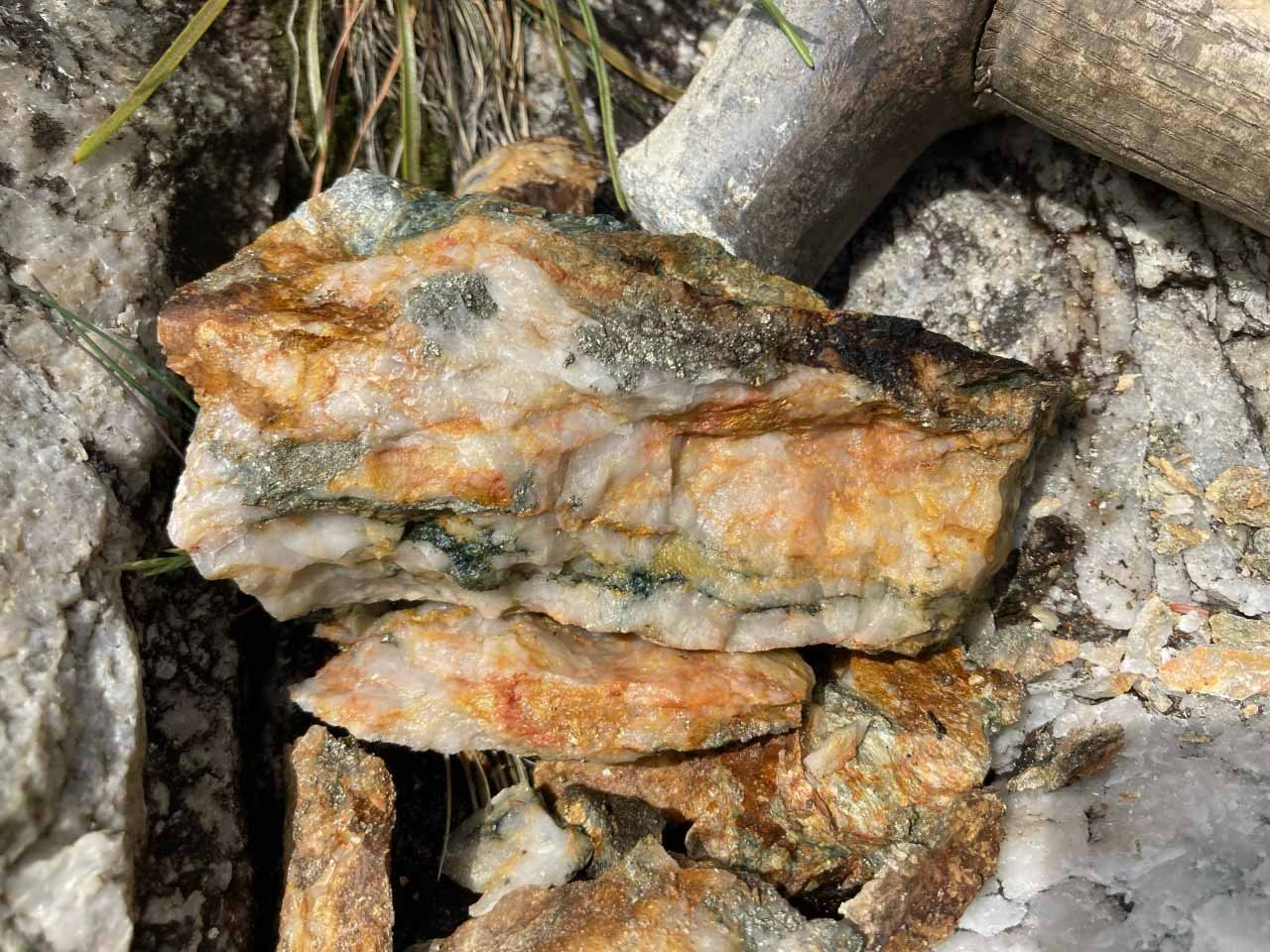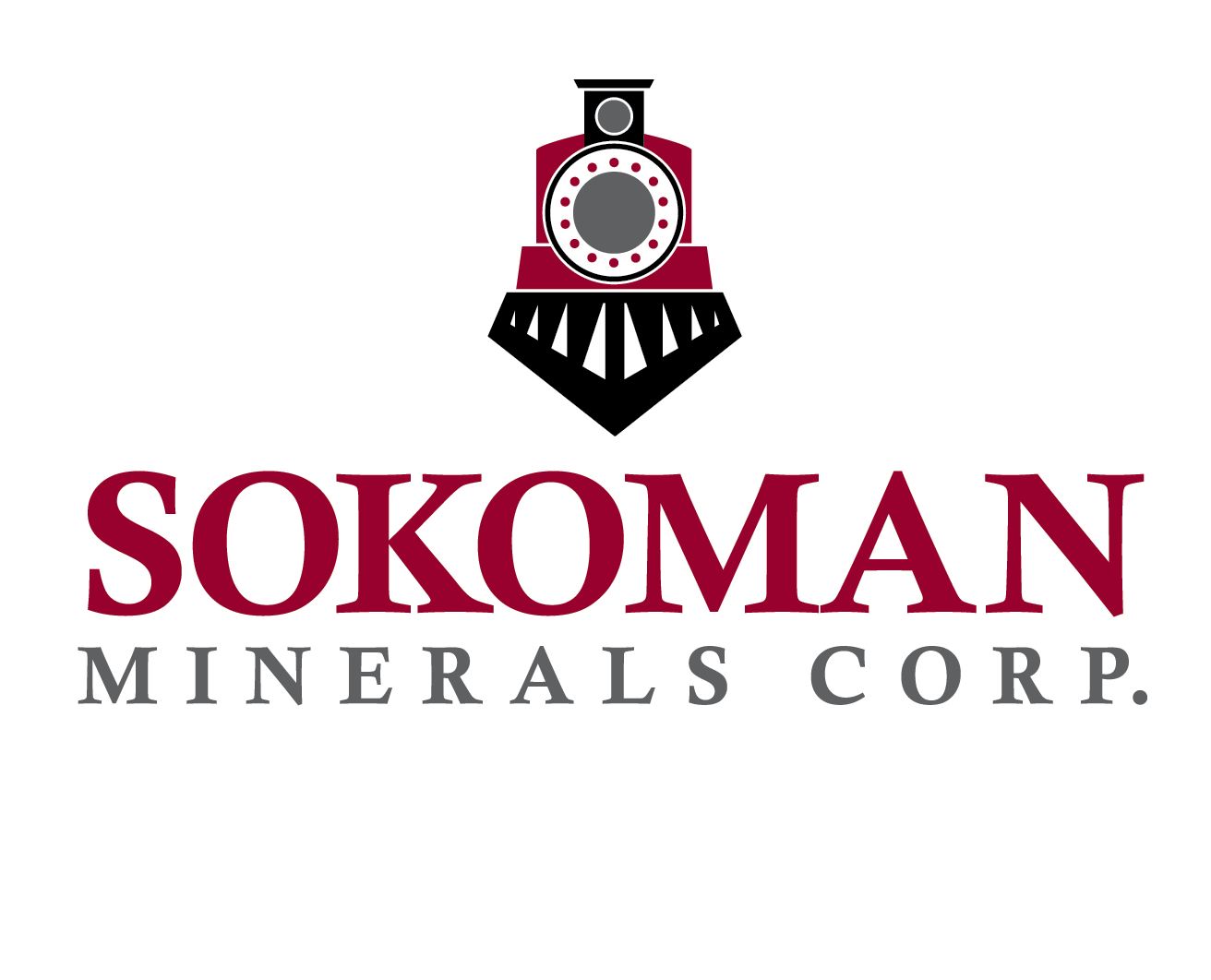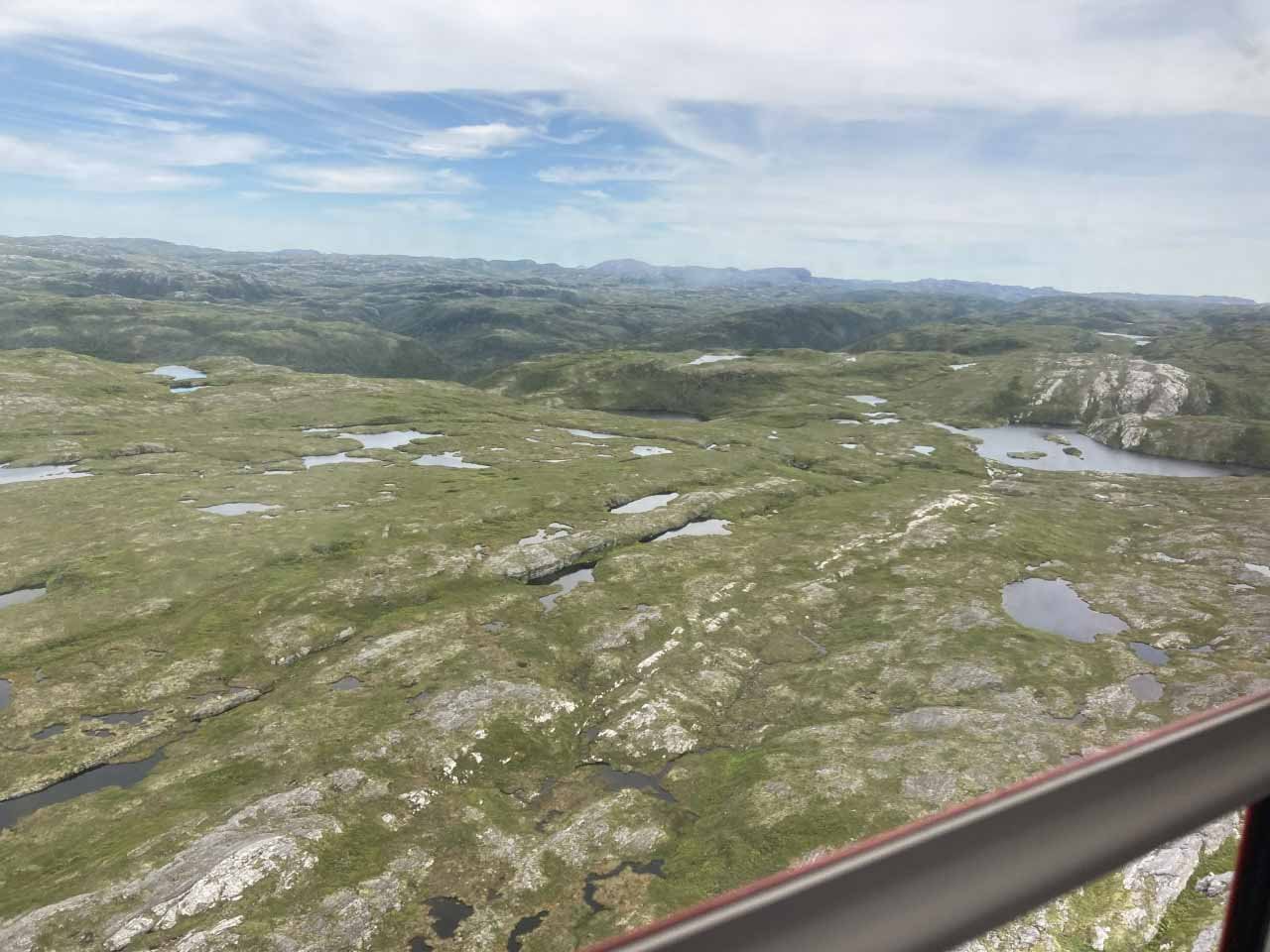
Grey River Gold Project
(Sokoman – Benton Joint Venture)
Project Summary
324 claims (8,100 hectares) centered on an ice-free harbour on the south coast of Newfoundland; 38 km southeast of the Golden Hope Sokoman Minerals/Benton Resources Joint Venture.
Historic grab samples and channel samples from the property range from less than 1 g/t to more than 225 g/t Au, locally with 200-300 g/t Ag.
Claims straddle an east-west trending ductile shear zone along which several metal-rich granites were emplaced and are unusually enriched in gold (Au), silver (Ag), molybdenum (Mo), copper (Cu), tungsten (W), fluorine (F) and bismuth (Bi).
A 5-km wide by 10-km long corridor on the property hosts several styles of gold and associated base metal mineralized zones including multiple mesothermal and intrusion-related Au-rich (+/- Bi-Ag-Sb-Pb-Zn) quartz veins; Pogo Type (high-grade Au deposit in Alaska >10M tonnes at 13.6 g/t Au). Previous workers have compared the gold mineralization at Grey River to the high-grade Pogo gold mine in the Tintina district of Alaska. The Pogo mine, to the end of 2019, produced 3.9M oz gold at 13.6 g/t Au (Northern Star Resources, November 22, 2021).
Highest gold grades at Grey River coincide with a large, elongated high-purity silica body, possibly large veins or meta-quartzite (12M tonnes >95% SiO) drilled by the Newfoundland Government in 1967. A strong spatial association with pyrite is also noted at Grey River.
Historic grab samples as well as recent grab samples (see the press release dated September 2, 2021), have yielded gold values ranging from 50 ppb Au to 225 g/t Au. In October 2021, the Alliance completed a 5-hole, 1,026 m diamond-drilling program with the holes spread over a 5-km strike length of the silica body. All holes intersected gold mineralization with the best results reported from GR-21-1 that returned 1.80 m grading 10.58 g/t Au (see the press release dated March 16, 2022).
In June 2022, the Sokoman Minerals/Benton Resources Alliance commenced the Phase 2 drilling program which consisted of 3,350 m in 14 holes. On January 16, 2023, the Alliance reported multiple intersections of gold mineralization over an expanded 6.9-kilometre strike length. Ten of the 14 holes reported significant gold mineralization (> 1 g/t Au over at least 1.0 m). The 2022 drill program also demonstrated both lateral and vertical continuity of gold mineralization and intersected anomalous gold values up to 1.7 km east of the 2021 drilling with holes GR-22-06, GR-22-09, and GR-22-19 all intersecting anomalous gold values. The mineralization remains open in all direction (see the press release dated January 16, 2023).









